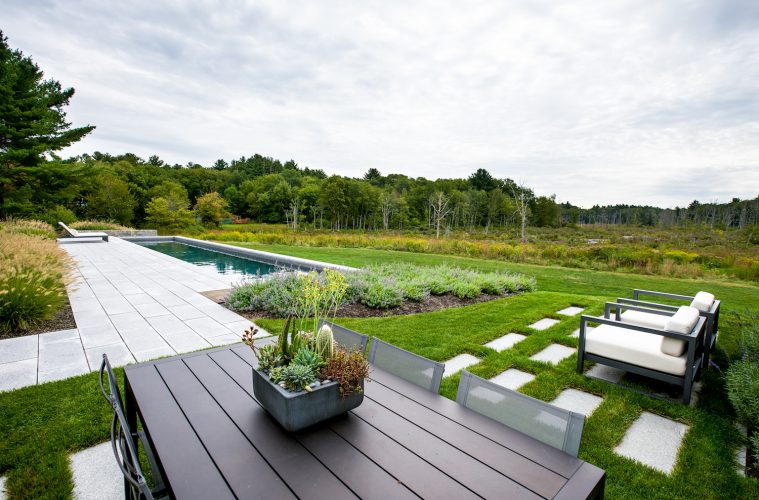Sited on a road hemmed with traditional Cape and Colonial houses, this new custom-built contemporary home is, among other things, intriguing.
Overlooking Andover’s Fish Brook wetland—a haven for wildlife including great blue heron, hawk, beaver, and fox—the house pays homage to the view from every angle. In fact, its very existence is owed to that view, as it was the impetus for the family’s purchase of the lot. “Everything was about the view of the wetland area—the siting of the house, the interior layout and design, and specifically the landscape,” says Russell Stott, landscape architect and partner at Andover Landscape, the firm responsible for the project.
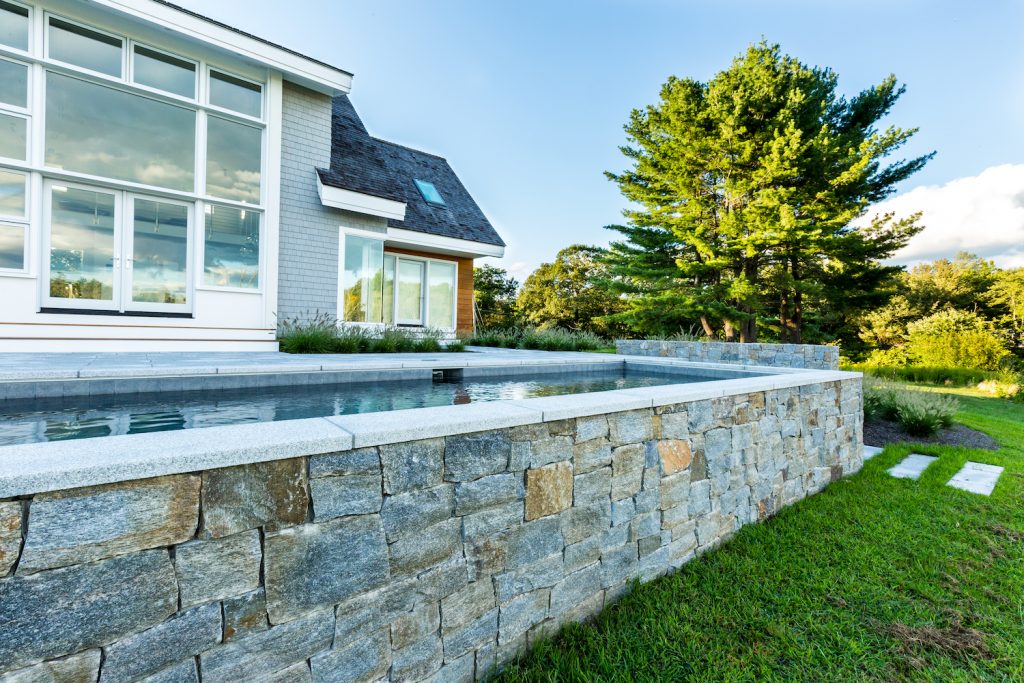
Contributing to the air of mystery is the fact that there are very few windows on the street-facing side of the house, making it private by design. Stott’s strategies for softening the straightforward cedar shake façade included planting a bosque of single-stem river birch; its cinnamon-colored peeling bark complements the horizontal cedar timbers. And a dark-toned aggregate path bordered with inlaid granite slabs adds an artistic, almost graphic element. “It’s not your grandma’s front walkway,” jokes Stott. Additionally, four cube-shaped planter boxes—chosen in lieu of a traditional foundation planting—are stationed at the entry atop a bed of Mexican beach pebbles (also found in the lawn joints). The design intent is seasonality and to added interest, as plants are swapped out with each change of season.
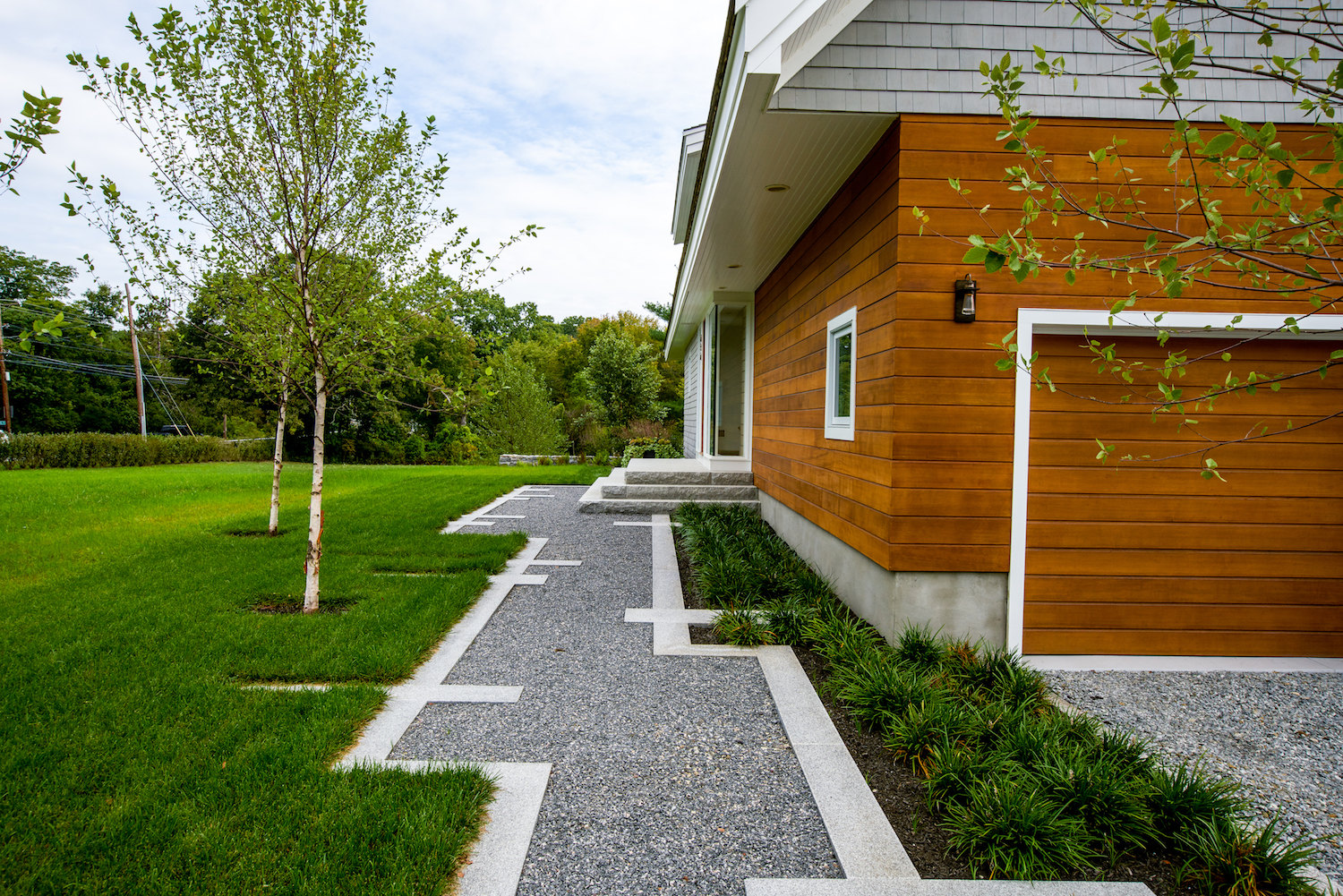
But the approach is just the beginning. “It’s not until, as a guest, you are welcomed into the home, that the story really starts to unfold,” notes Stott.
You enter into an open-concept living and dining area made lofty by soaring cathedral ceilings; every vantage point offers vistas of the meadow and water. The visual progression from the interior space to the greater landscape is made via a granite pool terrace, which connects to the 60-foot gunite lap pool, and ultimately reaches out to the preservation area beyond. The physical connection takes the form of Ipe deck landings that unite the house and the pool terrace. Of special note are the custom-designed corner windows in the dining room that serve as a unique lens for the landscape.
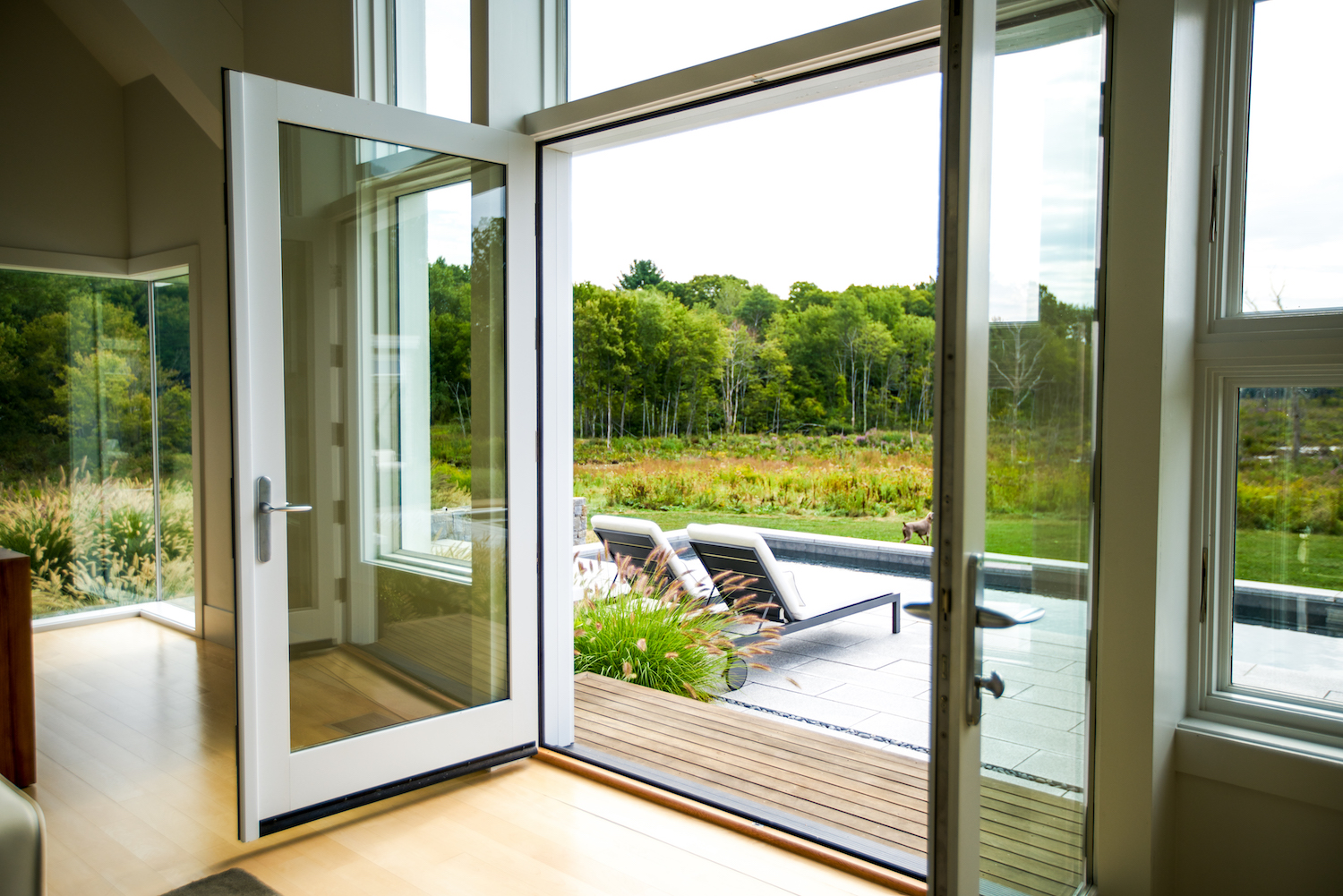
As the primary element tying the interior to the landscape, the terrace’s positioning was key. “For this project to be successful,” explains Stott, “the elevation of the pool terrace and pool had to be spot-on.” To make a seamless connection, he chose to use just two steps, thereby avoiding the need for a handrail, which would create a visual interruption. The terrace was set at such a height that when seated inside, the illusion is almost one of an infinity-edge pool—the ultimate expression of the borrowed landscape.
Another design challenge was locating the pool equipment and mechanical system for the automated pool cover, which was chosen to meet pool code without the need for a 4-foot fence—the conventional means of meeting code. Drawing on materials used for the house, Stott designed a cedar-shingled pool house against which he erected a stainless steel cable trellis for fragrant jasmine to climb. In addition to hiding equipment, the pool house anchors one end of the pool and affords privacy from the neighboring property. Matching it with the 10-foot width of the pool created a subtle symmetry that makes the whole configuration feel comfortable. Adding to the effect are the inlaid pavers, which made space for two armchairs.
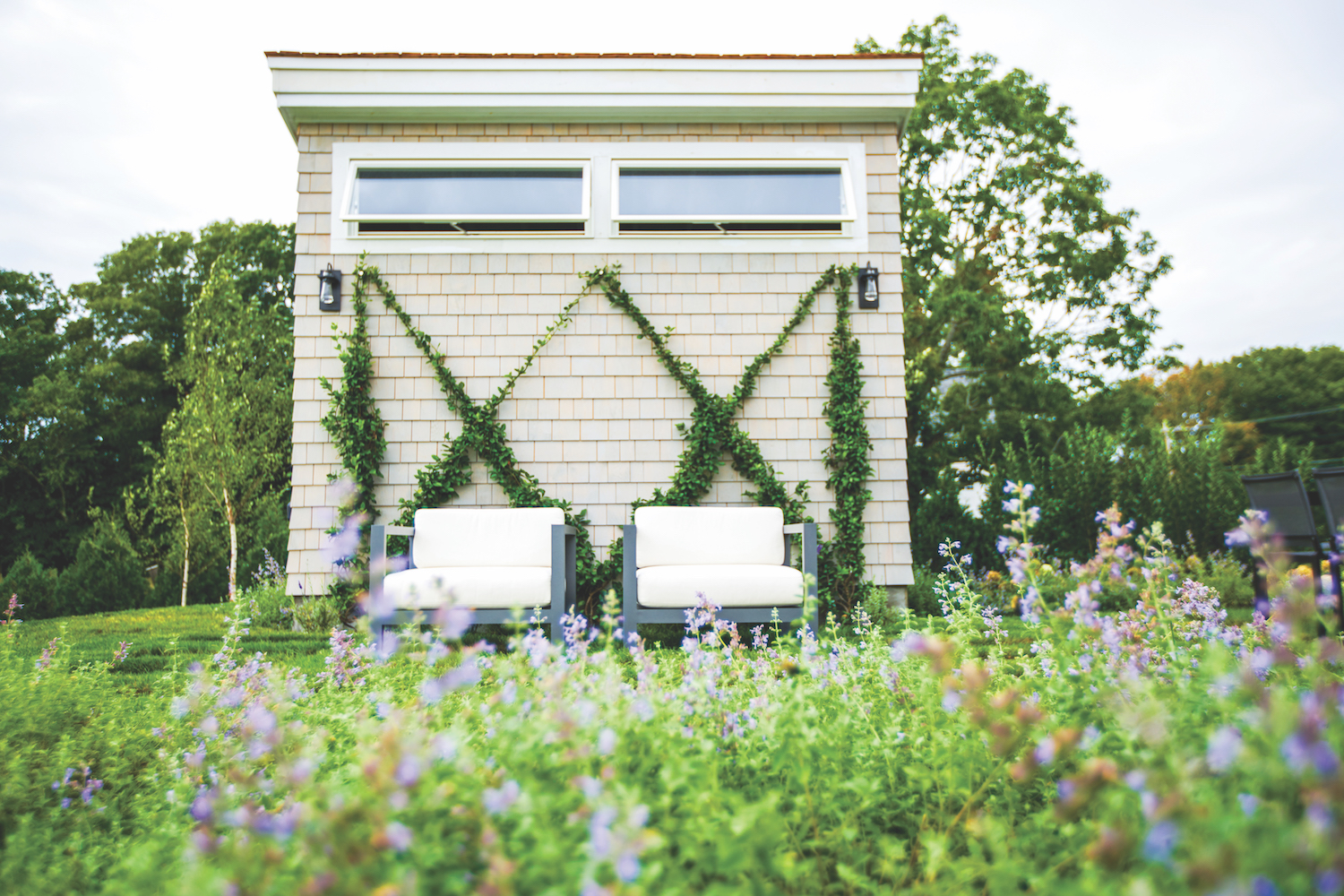
Throughout the project, Stott used classic New England materials such as Cape Ann granite, fieldstone, and natural stone veneer—materials that would blend with the natural surroundings. For example, a dark gray pool tile and a dark autumn Pebble Tec finish mimic the color of the standing water in the wetland, creating what Stott calls an indigenous look. “I was really keen on all of the details to make things cohesive,” he says. “What I really wanted is for the landscape and the home to speak the same language.”
The landscape materials also relate to the architecture. By giving them a contemporary treatment, Stott tied them into the clean-lined aesthetic of the house. The geometrical grid plantings are logical extensions of the architectural edges of the home, as are the paths, terraces, steps, and walls that extend perpendicularly from the building into the landscape.
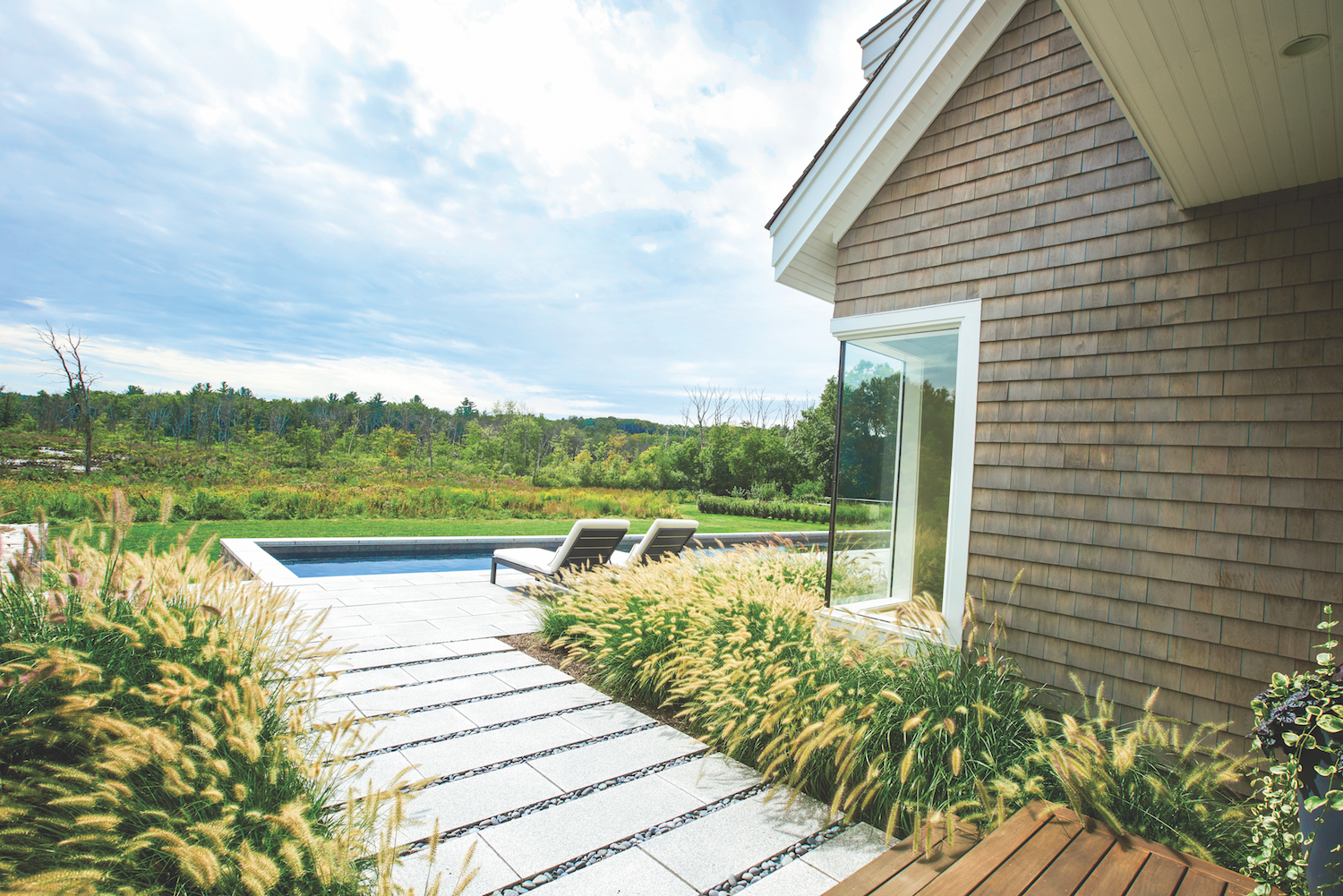
The plant palette is simple and low-maintenance. All the grasses and perennials are left untouched through the winter; in the spring, everything is cut back for a fresh flush each year. Arguably, autumn affords the most spectacular show, as the grasses turn yellow and blend with the changing wetland scenery. Stott notes, too, that those colors “pop off the house.”
It is no surprise that the homeowners, both of whom are veterinarians, have a deep adoration for the wildlife-rich wetland that fills their every sight line. And Stott took full advantage of nature’s offerings. The patterning, textures, and colors of the intentional landscape all harmonize with the greater environs to create a sanctuary setting. “The last thing I wanted was for it to be very busy and take away from the natural surroundings.”
Andover Landscape
978-475-8138

